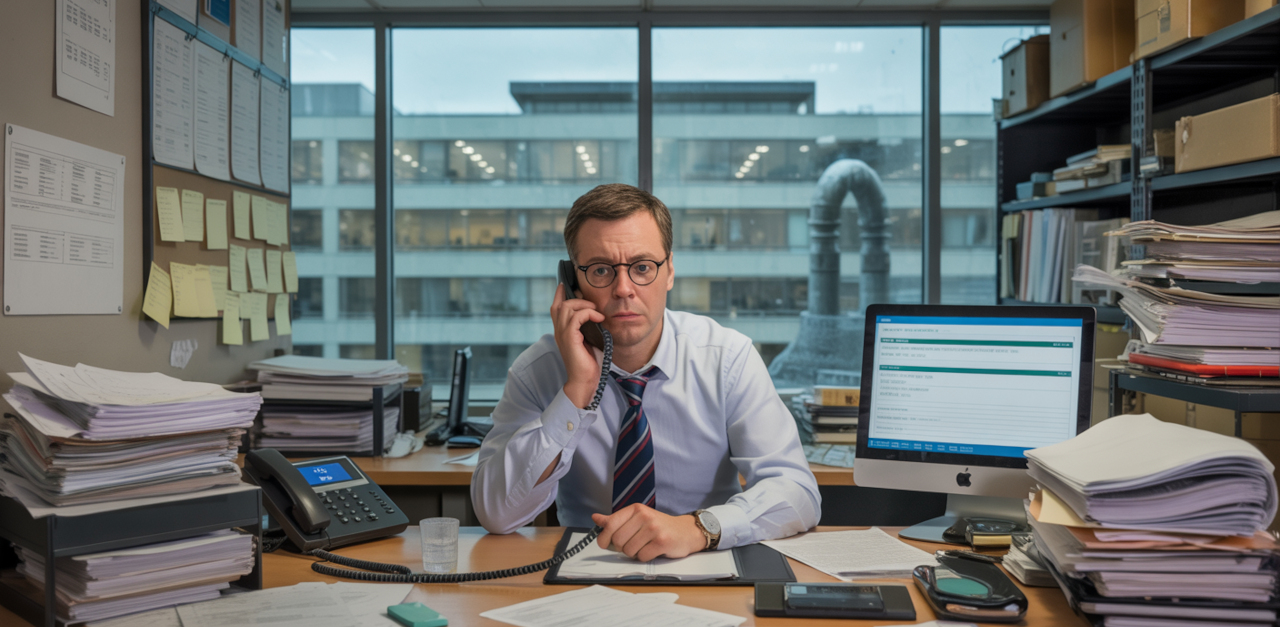
Are you a facilities management company? Wondering whether you’re making any common mistakes? If so, this is the article for you. Facilities management is a demanding field where efficiency, foresight, and adaptability are key to success.
Yet, we consistently see facilities management companies make avoidable mistakes that undermine their operations and client satisfaction. In this article, you’ll learn about the most common mistakes we see, and best practice advice on how best to avoid them. By the end, you’ll be able to implement these industry best practices for maximum efficiency and client satisfaction.
1. Relying on reactive maintenance instead of proactive planning
Too many facilities management companies default to reactive maintenance, addressing problems only after equipment fails or systems break down. This approach often results in unexpected downtime, costly emergency repairs, and frustrated tenants or clients. Studies show reactive maintenance can increase costs by 30-40% compared to planned maintenance. It also risks safety hazards, disrupts operations, and can damage a company’s reputation for reliability.
Here's how to fix it:
- Implement preventive maintenance schedules: Use tools like Computerised Maintenance Management Systems (CMMS) to schedule regular inspections and maintenance, catching issues before they escalate.
- Leverage predictive analytics: Invest in IoT-enabled sensors to monitor equipment health in real time, allowing you to predict and prevent failures.
- Train staff for early detection: Ensure your team is skilled at identifying the early signs of equipment wear to enable timely interventions.
By adopting a proactive approach, you can reduce costs, extend asset lifespans, and maintain smoother operations.
2. Underinvesting in staff training and development
Many facilities management firms fail to prioritise ongoing training, leaving staff unprepared for new technologies, compliance standards, or efficient workflows. This oversight can lead to outdated practices and missed opportunities. Without proper training, teams struggle to operate modern building systems, comply with regulations, or optimise processes. This can lead to inefficiencies, safety risks, potential fines, and higher employee turnover due to low morale.
How to fix it:
- Foster continuous learning: Encourage or provide ongoing training on emerging technologies, safety protocols, and certifications like Certified Facilities Manager (CFM) or Facilities Management Professional (FMP).
- Crosstrain employees: Equip staff with versatile skills to handle multiple roles, improving flexibility and reducing reliance on specific individuals.
- Stay compliant: Keep your team informed about evolving environmental, safety, and building code regulations to avoid costly penalties.
Investing in your team’s development enhances efficiency and strengthens your company’s reputation as an industry leader.
3. Ignoring sustainability and energy efficiency
Some facilities management companies overlook the importance of sustainable practices and energy-efficient solutions, often due to perceived costs or lack of awareness. This is a critical misstep in today’s eco-conscious market. Ignoring sustainability leads to higher energy costs, increased carbon footprints, and missed opportunities with clients who prioritise environmental responsibility. It can also result in non-compliance with standards like LEED or ENERGY STAR.
How to fix it:
- Conduct regular energy audits: Assess energy usage to identify inefficiencies and implement upgrades like LED lighting or smart HVAC (Heating, Ventilation, and Air Conditioning) systems.
- Pursue green certifications: Aim for certifications like LEED or BREEAM to showcase your commitment to sustainability and attract eco-minded clients.
- Engage stakeholders: Educate clients and occupants about sustainable initiatives, such as recycling programs or energy-saving practices, to build a collaborative culture.
Embracing sustainability cuts costs, boosts your reputation, and aligns with growing regulatory and client expectations.
Avoiding these common pitfalls—reactive maintenance, undertrained staff, and neglecting sustainability—can elevate your facilities management operations. By focusing on proactive planning, investing in your team, and prioritising eco-friendly practices, you can improve efficiency, reduce costs, and build stronger client relationships.
What’s your approach to solving these common problems? Let’s talk
